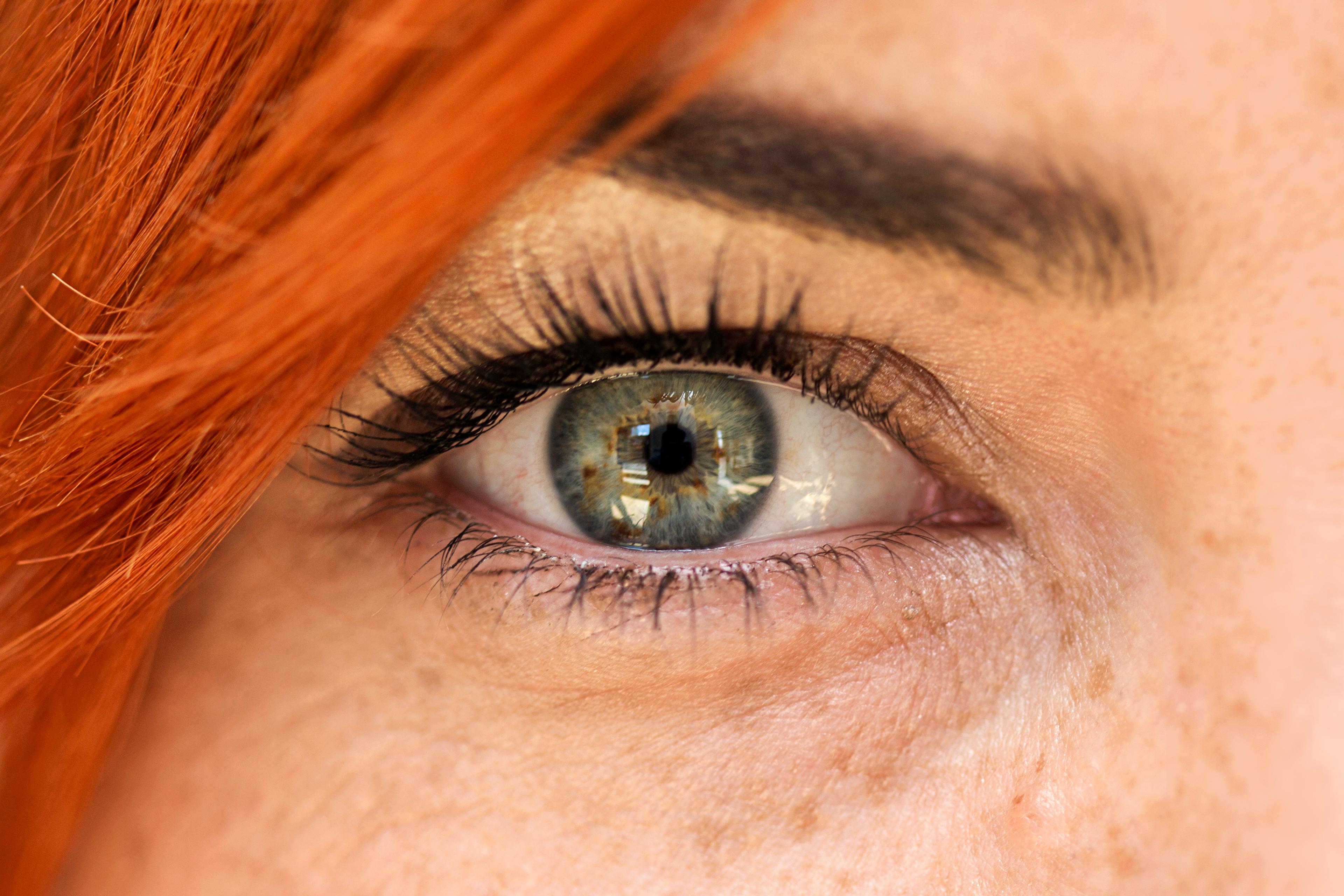There’s a brand new under-eye treatment that’s whipping up a frenzy in the aesthetics world. Infraorbital rejuvenation using polynucleotides. Put simply - a combined approach to under-eye rejuvenation using an amazing new substance. I spoke to Dr Uche, who's developed a protocol for this under-eye treatment, as well as two practitioners who have trained with him, to get their views on the benefits of polynucleotides for skin, and what this treatment means for the future of aesthetics.
The New Under Eye Treatment We All Want
Non-surgical treatments for infraorbital rejuvenation
Ok, so first up, what exactly does infraorbital mean? And why would we want to rejuvenate it? Infraorbital refers to the under-eye area. It’s here that many of us experience dark circles or slipped fat pads (which give the appearance of eye bags) that can leave us looking tired. Often, people will search for a way to ‘correct’ these issues.
One option that’s widely celebrated as a master of banishing under eye bags is tear trough filler (AKA under eye filler), but now it has competition. Ooooh! An under-eye treatment brawl? Well, not quite. Particularly as they can be used together to give gorgeous results.
What is this amazing new under-eye treatment?
The incredible Dr Uche Aniagwu, medical doctor and expert in under-eye rejuvenation, has developed a protocol that uses a combined approach to treating the under-eye area. This uses injections of polynucleotides alongside other popular treatments. Stay with me here and I’ll do my best to break it down into something less sciency and something more ooooooooooooh!
Polynucleotides are shortened DNA fractions that occur naturally in the body. While you may not 100% understand the ins and outs of what polynucleotides actually are, one thing’s for sure - they’re about to become a BIG deal in aesthetics. That’s because these polynucleotide chains make regenerative changes on a cellular level, meaning they are able to rejuvenate, rejuvenate, rejuvenate. And that’s what we’re here for! They don’t stop there either. When it comes to the benefits of polynucleotides, they…
- Increase cell turnover
- Improve skin elasticity
- Reduce signs of hyperpigmentation
- Minimise pore size
- Boost hyaluronic acid production
- Reduce hollowing
- Lessen fine lines
- Give a brighter complexion
Sign.me.up. My under eyes are looking seriously tired and this stuff sounds incredible!
Tell me more about this new under-eye treatment
Curious to find out more, I spoke to none other than Dr Uche himself, who kindly took some time out to explain the treatment in detail. So, why was the treatment instructor so keen to develop a protocol for the new under-eye treatment? How does it work? And what will it mean for patients and the aesthetics industry as a whole?
Describing the treatment, Dr Uche said, “The infraorbital area is my passion and I have spent years rejuvenating across a wide range of patients, but despite all my work in the facial region, I have been acutely aware of one major limitation - the tools. You see, I was always told, growing up, a good workman never blames his tools. But it's also true that a good workman can be that much better if he has optimal tools at his disposal. This has been my relationship with hyaluronic acid (HA) in the infraorbital region.
Despite being able to innovate treatments and provide relatively consistent results in treating tear troughs with HA filler, there is a relatively odd dynamic at play. HA and the tear trough are like two school kids who don't like each other but are forced to work on a project together - the results can be astounding to the surprise of all involved, but the potential for discord remains ever present.
With this in mind, when the idea of regenerative medicine as a segue for treating the most complicated area in this was presented to me, I was cautiously optimistic. That was in 2020. Now, 2 years and over 100 patients later, I am a firm believer in what regenerative medicine, specifically polynucleotides (PDRNs), can do for the infraorbital region. PDRNs work by signalling to particular cells in the body to change their behaviour and generate more of the good things we want: fat volume, collagen, hyaluronic acid, and angiogenesis. These things all result in a tighter, brighter, more lifted appearance and it's all achieved naturally, thereby circumventing the risks associated with injecting exogenous end-products (such as HA).
Dr Uche - expert in infraorbital rejuvenation
Are polynucleotides the answer to all our under-eye issues?
I think we can agree that polynucleotides sound pretty spectacular, right? But are they the be all and end all to our under-eye issues? Not for now. Well, not alone, at least. Dr Uche explains, “While the benefits for PDRNs range from reduction in inflammation, improved skin colour and texture, and even increased volume, it is still too early for them to replace our conventional injectable treatments. In fact, I recommend incorporating these treatments as part of a combination treatment plan. For example, my tear trough patients often get a combination of PDRNs, HA filler and mesotherapy. Other times it may be combined as part of a plan with anti-wrinkle injections, radiofrequency, laser resurfacing or even surgery. In the long run, however, don't be surprised to see PDRNs as part of the wider regenerative medicine class, start to phase out injectable treatments as we know them.
So, are polynucleotides the future of aesthetics?
Ok, so for now, polynucleotides are best at working their magic alongside other treatments, like HA fillers and mesotherapy, but it seems like they may well be causing quite the stir in the aesthetics arena, so what do they spell for the future? I asked Dr Uche and two practitioners who have trained in the treatment with him - aesthetics nurses Clare Riley and Kate Mullane.
Dr Uche says, “It goes without saying that this presents a fantastic opportunity for the future of the cosmetics industry. That bright future isn't limited to eyes either. As PDRNs and other regenerative modalities advance, we will see treatments resulting in more natural outcomes and a reduction in the well-known medical complications that scare practitioners and patients alike. Furthermore, with development of the PDRN field, there will be less burden on injector skill, which means greater assurance for patients.
Clare Riley, founder of Aesthetics by Clare, believes it is a turning point in aesthetic treatments, stating, “After undergoing training with the renowned Dr Uche on infraorbital rejuvenation, my eyes have been opened to the field of regenerative medicine in aesthetics.
I believe we are going to experience a shift to more regenerative treatments in the future, as patients seem to be favouring more natural treatments like these with minimal complications.. The results I have seen so far are incredible, and I am very excited to be providing polynucleotide treatment to my patients.
Hyaluronic acid dermal filler absolutely has its place in the aesthetics industry, and I believe it always will - especially for hollowing in the tear troughs. However, polynucleotides are suitable for more patients and provide a method of treatment that filler does not. Why would patients not want their own body to do the regenerative work to address eye-related concerns?
Despite polynucleotides not offering an immediate result in the way that hyaluronic acid fillers do, and an element of patience being needed to wait for the full results, I believe that regenerative treatments will be great for patients in the long run. I look forward to seeing this development of regenerative medicine in the aesthetics industry.”
Kate Mullane, owner of Heidi Rose Aesthetics, also trained with Dr Uche and agrees. She explains, “I think polynucleotides are a fantastic concept in the world of regenerative medicine. They’re ideal for patients who are unsuitable for certain treatments, such as those with excessive bags under the eye area or poor skin quality. In patients like these dermal fillers under the eye area are not suitable and a polynucleotide provides the perfect alternative.
It's great for the industry, as more patients can be treated for varying complaints. Concerns such as scarring, wrinkle depth and even poor skin quality can be addressed. Anything that gives the patient and clinician more treatment options is wonderful."
Polynucleotide treatment breakdown
If this sounds like a treatment you fancy trying out, you'll probably want to know a few key details, like, how many sessions will I need? How soon will I see the results? And how much does it cost? Here's what you need to know, in a nutshell...
- 2-3 treatments, 4 weeks apart
- Noticeable results in 90 days
- Maintenance every 9 months
- £600 for 3 sessions
So, keep your eyes peeled and watch this space for more info on this new polynucleotide treatment. It’s going to be BIG.
Fancy more rejuvenated eyes? Check out your options and practitioners in your area over on Glowday.

